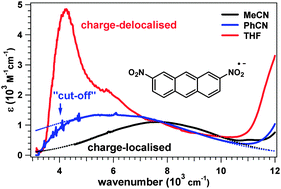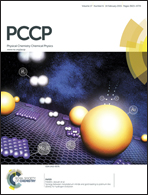The influence of bridge-reduced state levels on the electron transfer within the 2,7-dinitroanthracene radical anion†
Abstract
Optical and EPR spectroscopy show that the 2,7-dinitroanthracene radical anion has an (apparent) electronic coupling much higher than either its N,N distance or its non-Kekule substitution would suggest. The results can only be explained if a low-lying bridge redox state is influencing the electron transfer.



 Please wait while we load your content...
Please wait while we load your content...